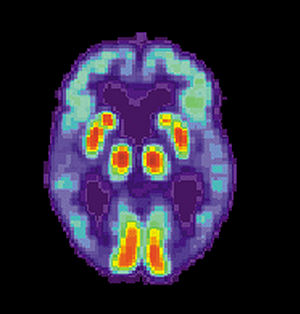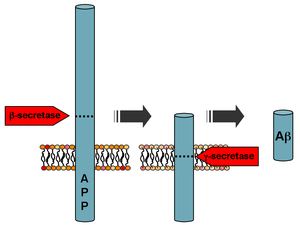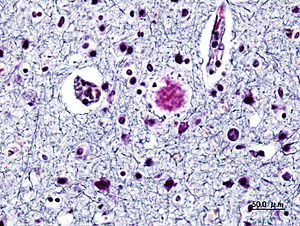USPTO Guidance On Patentable Subject Matter
Curator and Reporter: Larry H Bernstein, MD, FCAP
Revised 4 July, 2014
http://pharmaceuticalintelligence.com/2014/07/03/uspto-guidance-on-patentable-subject-matter
I came across a few recent articles on the subject of US Patent Office guidance on patentability as well as on Supreme Court ruling on claims. I filed several patents on clinical laboratory methods early in my career upon the recommendation of my brother-in-law, now deceased. Years later, after both brother-in-law and patent attorney are no longer alive, I look back and ask what I have learned over $100,000 later, with many trips to the USPTO, opportunities not taken, and a one year provisional patent behind me.
My conclusion is
(1) that patents are for the protection of the innovator, who might realize legal protection, but the cost and the time investment can well exceed the cost of startup and building a small startup enterprize, that would be the next step.
(2) The other thing to consider is the capability of the lawyer or firm that represents you. A patent that is well done can be expected to take 5-7 years to go through with due diligence. I would not expect it to be done well by a university with many other competing demands. I might be wrong in this respect, as the climate has changed, and research universities have sprouted engines for change. Experienced and productive faculty are encouraged or allowed to form their own such entities.
(3) The emergence of Big Data, computational biology, and very large data warehouses for data use and integration has changed the landscape. The resources required for an individual to pursue research along these lines is quite beyond an individuals sole capacity to successfully pursue without outside funding. In addition, the changed designated requirement of first to publish has muddied the water.
Of course, one can propose without anything published in the public domain. That makes it possible for corporate entities to file thousands of patents, whether there is actual validation or not at the time of filing. It would be a quite trying experience for anyone to pursue in the USPTO without some litigation over ownership of patent rights. At this stage of of technology development, I have come to realize that the organization of research, peer review, and archiving of data is still at a stage where some of the best systems avalailable for storing and accessing data still comes considerably short of what is needed for the most complex tasks, even though improvements have come at an exponential pace.
I shall not comment on the contested views held by physicists, chemists, biologists, and economists over the completeness of guiding theories strongly held. Only history will tell. Beliefs can hold a strong sway, and have many times held us back.
I am not an expert on legal matters, but it is incomprehensible to me that issues concerning technology innovation can be adjudicated in the Supreme Court, as has occurred in recent years. I have postgraduate degrees in Medicine, Developmental Anatomy, and post-medical training in pathology and laboratory medicine, as well as experience in analytical and research biochemistry. It is beyond the competencies expected for these type of cases to come before the Supreme Court, or even to the Federal District Courts, as we see with increasing frequency, as this has occurred with respect to the development and application of the human genome.
I’m not sure that the developments can be resolved for the public good without a more full development of an open-access system of publishing. Now I present some recent publication about, or published by the USPTO.
DR ANTHONY MELVIN CRASTO
YOU ARE FOLLOWING THIS BLOG You are following this blog, along with 1,014 other amazing people (manage).
USPTO Guidance On Patentable Subject Matter: Impediment to Biotech Innovation
Joanna T. Brougher, David A. Fazzolare J Commercial Biotechnology 2014 20(3):Brougher
Abstract In June 2013, the U.S. Supreme Court issued a unanimous decision upending more than three decades worth of established patent practice when it ruled that isolated gene sequences are no longer patentable subject matter under 35 U.S.C. Section 101.While many practitioners in the field believed that the USPTO would interpret the decision narrowly, the USPTO actually expanded the scope of the decision when it issued its guidelines for determining whether an invention satisfies Section 101.
The guidelines were met with intense backlash with many arguing that they unnecessarily expanded the scope of the Supreme Court cases in a way that could unduly restrict the scope of patentable subject matter, weaken the U.S. patent system, and create a disincentive to innovation. By undermining patentable subject matter in this way, the guidelines may end up harming not only the companies that patent medical innovations, but also the patients who need medical care. This article examines the guidelines and their impact on various technologies.
Keywords: patent, patentable subject matter, Myriad, Mayo, USPTO guidelines
Full Text: PDF
References
35 U.S.C. Section 101 states “Whoever invents or discovers any new and useful process, machine, manufacture, or composition of matter, or any new and useful improvement thereof, may obtain a patent therefor, subject to the conditions and requirements of this title.
” Prometheus Laboratories, Inc. v. Mayo Collaborative Services, 566 U.S. ___ (2012)
Association for Molecular Pathology et al., v. Myriad Genetics, Inc., 569 U.S. ___ (2013).
Parke-Davis & Co. v. H.K. Mulford Co., 189 F. 95, 103 (C.C.S.D.N.Y. 1911)
USPTO. Guidance For Determining Subject Matter Eligibility Of Claims Reciting Or Involving Laws of Nature, Natural Phenomena, & Natural Products.
http://www.uspto.gov/patents/law/exam/myriad-mayo_guidance.pdf
Funk Brothers Seed Co. v. Kalo Inoculant Co., 333 U.S. 127, 131 (1948)
USPTO. Guidance For Determining Subject Matter Eligibility Of Claims Reciting Or Involving Laws of Nature, Natural Phenomena, & Natural Products.
http://www.uspto.gov/patents/law/exam/myriad-mayo_guidance.pdf
Courtney C. Brinckerhoff, “The New USPTO Patent Eligibility Rejections Under Section 101.” PharmaPatentsBlog, published May 6, 2014, accessed http://www.pharmapatentsblog.com/2014/05/06/the-new-patent-eligibility-rejections-section-101/
Courtney C. Brinckerhoff, “The New USPTO Patent Eligibility Rejections Under Section 101.” PharmaPatentsBlog, published May 6, 2014, accessed http://www.pharmapatentsblog.com/2014/05/06/the-new-patent-eligibility-rejections-section-101/
DOI: http://dx.doi.org/10.5912/jcb664
- IN DEPTH
INTELLECTUAL PROPERTY
Biotech feels a chill from changing U.S. patent rules
A 2013 Supreme Court decision that barred human gene patents is scrambling patenting policies.
PHOTO: MLADEN ANTONOV/AFP/GETTY IMAGES
A year after the U.S. Supreme Court issued a landmark ruling that human genes cannot be patented, the biotech industry is struggling to adapt to a landscape in which inventions derived from nature are increasingly hard to patent. It is also pushing back against follow-on policies proposed by the U.S. Patent and Trademark Office (USPTO) to guide examiners deciding whether an invention is too close to a natural product to deserve patent protection. Those policies reach far beyond what the high court intended, biotech representatives say.
“Everything we took for granted a few years ago is now changing, and it’s generating a bit of a scramble,” says patent attorney Damian Kotsis of Harness Dickey in Troy, Michigan, one of more than 15,000 people who gathered here last week for the Biotechnology Industry Organization’s (BIO’s) International Convention.
At the meeting, attorneys and executives fretted over the fate of patent applications for inventions involving naturally occurring products—including chemical compounds, antibodies, seeds, and vaccines—and traded stories of recent, unexpected rejections by USPTO. Industry leaders warned that the uncertainty could chill efforts to commercialize scientific discoveries made at universities and companies. Some plan to appeal the rejections in federal court.
USPTO officials, meanwhile, implored attendees to send them suggestions on how to clarify and improve its new policies on patenting natural products, and even announced that they were extending the deadline for public comment by a month. “Each and every one of you in this room has a moral duty … to provide written comments to the PTO,” patent lawyer and former USPTO Deputy Director Teresa Stanek Rea told one audience.
At the heart of the shake-up are two Supreme Court decisions: the ruling last year in Association for Molecular Pathology v. Myriad Genetics Inc. that human genes cannot be patented because they occur naturally (Science, 21 June 2013, p. 1387); and the 2012 Mayo v. Prometheus decision, which invalidated a patent on a method of measuring blood metabolites to determine drug doses because it relied on a “law of nature” (Science, 12 July 2013, p. 137).
Myriad and Mayo are already having a noticeable impact on patent decisions, according to a study released here. It examined about 1000 patent applications that included claims linked to natural products or laws of nature that USPTO reviewed between April 2011 and March 2014. Overall, examiners rejected about 40%; Myriad was the basis for rejecting about 23% of the applications, and Mayo about 35%, with some overlap, the authors concluded. That rejection rate would have been in the single digits just 5 years ago, asserted Hans Sauer, BIO’s intellectual property counsel, at a press conference. (There are no historical numbers for comparison.) The study was conducted by the news service Bloomberg BNA and the law firm Robins, Kaplan, Miller & Ciseri in Minneapolis, Minnesota.
USPTO is extending the decisions far beyond diagnostics and DNA?
The numbers suggest USPTO is extending the decisions far beyond diagnostics and DNA, attorneys say. Harness Dickey’s Kotsis, for example, says a client recently tried to patent a plant extract with therapeutic properties; it was different from anything in nature, Kotsis argued, because the inventor had altered the relative concentrations of key compounds to enhance its effect. Nope, decided USPTO, too close to nature.
In March, USPTO released draft guidance designed to help its examiners decide such questions, setting out 12 factors for them to weigh. For example, if an examiner deems a product “markedly different in structure” from anything in nature, that counts in its favor. But if it has a “high level of generality,” it gets dinged.
The draft has drawn extensive criticism. “I don’t think I’ve ever seen anything as complicated as this,” says Kevin Bastian, a patent attorney at Kilpatrick Townsend & Stockton in San Francisco, California. “I just can’t believe that this will be the standard.”
USPTO officials appear eager to fine-tune the draft guidance, but patent experts fear the Supreme Court decisions have made it hard to draw clear lines. “The Myriad decision is hopelessly contradictory and completely incoherent,” says Dan Burk, a law professor at the University of California, Irvine. “We know you can’t patent genetic sequences,” he adds, but “we don’t really know why.”
Get creative in using Draft Guidelines!
For now, Kostis says, applicants will have to get creative to reduce the chance of rejection. Rather than claim protection for a plant extract itself, for instance, an inventor could instead patent the steps for using it to treat patients. Other biotech attorneys may try to narrow their patent claims. But there’s a downside to that strategy, they note: Narrower patents can be harder to protect from infringement, making them less attractive to investors. Others plan to wait out the storm, predicting USPTO will ultimately rethink its guidance and ease the way for new patents.
Public comment period extended
USPTO has extended the deadline for public comment to 31 July, with no schedule for issuing final language. Regardless of the outcome, however, Stanek Rea warned a crowd of riled-up attorneys that, in the world of biopatents, “the easy days are gone.”
United States Patent and Trademark Office
Today we published and made electronically available a new edition of the Manual of Patent Examining Procedure (MPEP). Manual of Patent Examining Procedure uspto.gov http://www.uspto.gov/web/offices/pac/mpep/index.html Summary of Changes
PDF Title Page
PDF Foreword
PDF Introduction
PDF Table of Contents
PDF Chapter 600 –
PDF Parts, Form, and Content of Application Chapter 700 –
PDF Examination of Applications Chapter 800 –
PDF Restriction in Applications Filed Under 35 U.S.C. 111; Double Patenting Chapter 900 –
PDF Prior Art, Classification, and Search Chapter 1000 –
PDF Matters Decided by Various U.S. Patent and Trademark Office Officials Chapter 1100 –
PDF Statutory Invention Registration (SIR); Pre-Grant Publication (PGPub) and Preissuance Submissions Chapter 1200 –
PDF Appeal Chapter 1300 –
PDF Allowance and Issue Appendix L –
PDF Patent Laws Appendix R –
PDF Patent Rules Appendix P –
PDF Paris Convention Subject Matter Index
PDF Zipped version of the MPEP current revision in the PDF format.
Manual of Patent Examining Procedure (MPEP)Ninth Edition, March 2014
The USPTO continues to offer an online discussion tool for commenting on selected chapters of the Manual. To participate in the discussion and to contribute your ideas go to:
http://uspto-mpep.ideascale.com.
Manual of Patent Examining Procedure (MPEP) Ninth Edition, March 2014
The USPTO continues to offer an online discussion tool for commenting on selected chapters of the Manual. To participate in the discussion and to contribute your ideas go to: http://uspto-mpep.ideascale.com.
Note: For current fees, refer to the Current USPTO Fee Schedule.
Consolidated Laws – The patent laws in effect as of May 15, 2014. Consolidated Rules – The patent rules in effect as of May 15, 2014. MPEP Archives (1948 – 2012)
Current MPEP: Searchable MPEP
- See the user manual or quick reference guide for help with search features (e.g., default operators, proximity searches, and wild cards) and navigation.
The documents updated in the Ninth Edition of the MPEP, dated March 2014, include changes that became effective in November 2013 or earlier.
All of the documents have been updated for the Ninth Edition except Chapters 800, 900, 1000, 1300, 1700, 1800, 1900, 2000, 2300, 2400, 2500, and Appendix P.
More information about the changes and updates is available from the “Blue Page – Introduction” of the Searchable MPEP or from the “Summary of Changes” link to the HTML and PDF versions provided below. Discuss the Manual of Patent Examining Procedure (MPEP) Welcome to the MPEP discussion tool!
We have received many thoughtful ideas on Chapters 100-600 and 1800 of the MPEP as well as on how to improve the discussion site. Each and every idea submitted by you, the participants in this conversation, has been carefully reviewed by the Office, and many of these ideas have been implemented in the August 2012 revision of the MPEP and many will be implemented in future revisions of the MPEP. The August 2012 revision is the first version provided to the public in a web based searchable format. The new search tool is available at http://mpep.uspto.gov. We would like to thank everyone for participating in the discussion of the MPEP.
We have some great news! Chapters 1300, 1500, 1600 and 2400 of the MPEP are now available for discussion. Please submit any ideas and comments you may have on these chapters. Also, don’t forget to vote on ideas and comments submitted by other users. As before, our editorial staff will periodically be posting proposed new material for you to respond to, and in some cases will post responses to some of the submitted ideas and comments.Recently, we have received several comments concerning the Leahy-Smith America Invents Act (AIA). Please note that comments regarding the implementation of the AIA should be submitted to the USPTO via email t aia_implementation@uspto.gov or via postal mail, as indicated at the America Invents Act Web site. Additional information regarding the AIA is available at www.uspto.gov/americainventsact We have also received several comments suggesting policy changes which have been routed to the appropriate offices for consideration. We really appreciate your thinking and recommendations!
- 800 Restriction in Applications Filed Under 35 U.S.C. 111; Double Patenting
- 900 Prior Art, Classification, and Search
- 1000 Matters Decided by Various U.S. Patent and Trademark Office Officials
- 1100 Statutory Invention Registration (SIR); Pre-Grant Publication (PGPub) and Preissuance Submissions
- 1200 Appeal
- 1300 Allowance and Issue
FDA Guidance for Industry:Electronic Source Data in Clinical Investigations
The FDA published its new Guidance for Industry (GfI) – “Electronic Source Data in Clinical Investigations” in September 2013.
The Guidance defines the expectations of the FDA concerning electronic source data generated in the context of clinical trials. Find out more about this Guidance.
http://www.gmp-compliance.org/enews_4288_FDA%20Guidance%20for%20Industry%3A%20Electronic%20Source%20Data%20in%20Clinical%20Investigations
_8534,8457,8366,8308,Z-COVM_n.html
| After more than 5 years and two draft versions, the final version of the Guidance for Industry (GfI) – “Electronic Source Data in Clinical Investigations” was published in September 2013. This new FDA Guidance defines the FDA’s expectations for sponsors, CROs, investigators and other persons involved in the capture, review and retention of electronic source data generated in the context of FDA-regulated clinical trials.In an effort to encourage the modernization and increased efficiency of processes in clinical trials, the FDA clearly supports the capture of electronic source data and emphasizes the agency’s intention to support activities aimed at ensuring the reliability, quality, integrity and traceability of this source data, from its electronic source to the electronic submission of the data in the context of an authorization procedure. The Guidance addresses aspects as data capture, data review and record retention. When the computerized systems used in clinical trials are described, the FDA recommends that the description not only focus on the intended use of the system, but also on data protection measures and the flow of data across system components and interfaces. In practice, the pharmaceutical industry needs to meet significant requirements regarding organisation, planning, specification and verification of computerized systems in the field of clinical trials. The FDA also mentions in the Guidance that it does not intend to apply 21 CFR Part 11 to electronic health records (EHR). Author: Oliver Herrmann Q-Infiity Source: http://www.fda.gov/downloads/Drugs/GuidanceComplianceRegulatoryInformation/ Guidances/UCM328691.pdf Webinar: https://collaboration.fda.gov/p89r92dh8wc |









